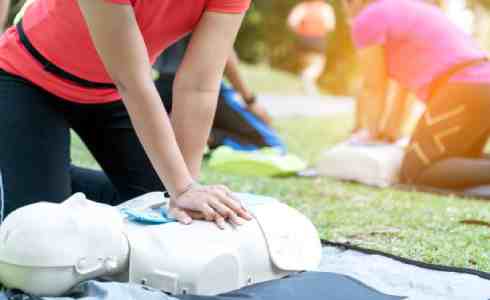Taking CPR training is an essential skill for anyone. It can help save lives in cases of sudden cardiac arrest, or even helping a choking person breathe.
Those who are interested in learning CPR should prepare before the class by knowing what to expect. For example, there are various classes available and some may include a different level of instruction for adults, children, and infants.
Refresher Courses

CPR (cardiopulmonary resuscitation) is an important lifesaving skill that can save someone’s life during a medical emergency when the victim’s heart or breathing stops. It’s important to know how to respond to these situations, especially when you’re with another person and can call 911 or your local emergency number. The first thing to do is to check to see if the person is responsive or unconscious and then start CPR.
While traditional cpr training classes required you to rearrange your schedule and travel to a class, many organizations now offer online-only or blended learning classes that allow you to learn at your own pace through video, then show your skills in person for certification.
You can also customize your course by adding or removing Pediatric CPR training to meet your specific needs. You can also add First Aid training, which covers treating wounds such as bleeding, poisoning, and shock. These courses can also teach you how to use an AED, or automated external defibrillator, which can restore the heart’s rhythm and restart the blood flow to the brain and other vital organs during a cardiac emergency.
Bystander Training
Although we’ve come a long way since the days when only first responders performed cardiopulmonary resuscitation (CPR), many people still don’t know how to act in an emergency. This may be due to lack of awareness about how to help a victim, fear of doing something wrong, or concerns about liability and transmission of infectious diseases.
The low survival rate of out-of-hospital cardiac arrest (OHCA) can be improved if more people learn CPR. Routinely teaching family members about the short window of time during which CPR must be started can also increase their willingness to perform this lifesaving action.
Several cpr training organizations offer courses for bystanders. In addition to educating participants about the importance of acting early in a cardiac event, these classes teach participants how to call 911 and use an automated external defibrillator (AED). Some programs also provide instruction on how to intervene safely in situations of sexual assault or harassment. These sessions are modeled after “If you see something, say something” campaigns, which encourage bystanders to take a proactive role in maintaining safe communities.
Working With First Responders

Many health care professions require CPR and first-aid training. It’s also often required for child care providers, lifeguards, and other occupations that deal directly with people. It’s one of the easiest skills to learn, as it focuses on maintaining blood flow and oxygen to the brain in case of an emergency.
Cardiac arrest can happen anywhere, and the sooner it is treated, the better the chances of survival. Bystander CPR can help the victim stay alive until EMS arrives. Other emergency situations that can be helped by CPR include choking and stopping hemorrhaging.
When counseling first responders, it’s important to understand the trauma they can face on a daily basis. It’s also important to teach them how to recognize when they need help themselves. This helps them overcome the stigma that they must be strong enough to handle any situation. This type of work can take its toll on mental health, which is why it’s vital that first responders seek counseling when needed.
Having More Than One Person Certified
It’s a good idea to have more than one person in the household or at work certified in CPR. That way, if someone goes into cardiac arrest, the second person can call for help while the first person is performing chest compressions. That can significantly improve a victim’s chances of survival.
In addition to teaching the steps of CPR, many classes also include instruction on how to use an Automatic External Defibrillator (AED). They may even teach participants how to locate an AED in their vicinity and explain how to access it and the steps involved in using it.
Summary:
Once a person has completed a class and passed the certification exam, most institutions will send them a digital or printable copy of their certificate online. They may also follow up by sending them a hard copy through mail. They also may provide training materials to help refresh the skills learned in class. This allows a person to remain proficient and confident in the event of a medical emergency.